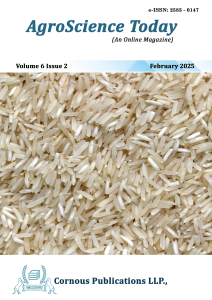The environmental quality of water, soil, and air is increasingly degraded, making it essential to enhance pollution prevention through environmental monitoring. Several methods exist for monitoring environmental quality, with a particular focus on biological approaches. Biological methods evaluate environmental health by analyzing the presence of diverse species, such as bacteria, virus, insects, plants, and fish, as indicators. Microbial biosensors are capable of detecting substances in the environment due to the specific biological reactions of microorganisms or their components. The growing emphasis on sustainable development and environmental conservation has fuelled interest in biomonitoring as a proactive approach to managing pollution. Furthermore, technologies such as bioinformatics and genetic engineering enable the way for designing highly sophisticated and efficient microbial biosensors capable of detecting environmental pollutants with greater precision and sensitivity.
Arsenic (As) is a toxic environmental pollutant that occurs naturally in soil and groundwater as inorganic and organic forms. The global dietary preference and high grain As accumulation potential in rice, proclaims rice as one of the chief source of As entry in food chain. Among all the cultivated crops rice has more than 10-fold tendency to accumulate carcinogenic arsenic. Rice is majorly grown under reduced state which favors inorganic arsenic (As+3) availability in soil, its uptake and accumulation in grains. However, this problem is becoming worse as most of the places in India are affected by severe arsenic contamination and Chhattisgarh state is one of them. Persistent consumption of arsenic can cause severe health issues like chronic cancer and various neurological disorders. Effective measures must be taken to reduce and mitigate this concern for As-safe rice. Most of the approaches on reducing accumulation of arsenic in rice utilizes agronomic, and biotechnological approaches but undermining natural variation can be the most economical way to mitigate this concern. This article comprehensively summarizes different ways to reduce arsenic in rice grains.
Maize (Zea mays L.) productivity is severely impacted by ear rot diseases, primarily Fusarium ear rot (FER) and Aspergillus ear rot (AER). These diseases not only reduce yields but also lead to mycotoxin contamination, posing significant health and economic risks. Favourable environmental conditions, insect damage, and agronomic practices contribute to disease severity. Integrated management, including host plant resistance, cultural and biological control, and judicious chemical applications, is crucial for disease mitigation. Sustainable pre- and post-harvest strategies can minimize mycotoxin contamination, ensuring food safety. This article highlights the epidemiology, symptoms, and management of maize ear rots to support sustainable maize production.
